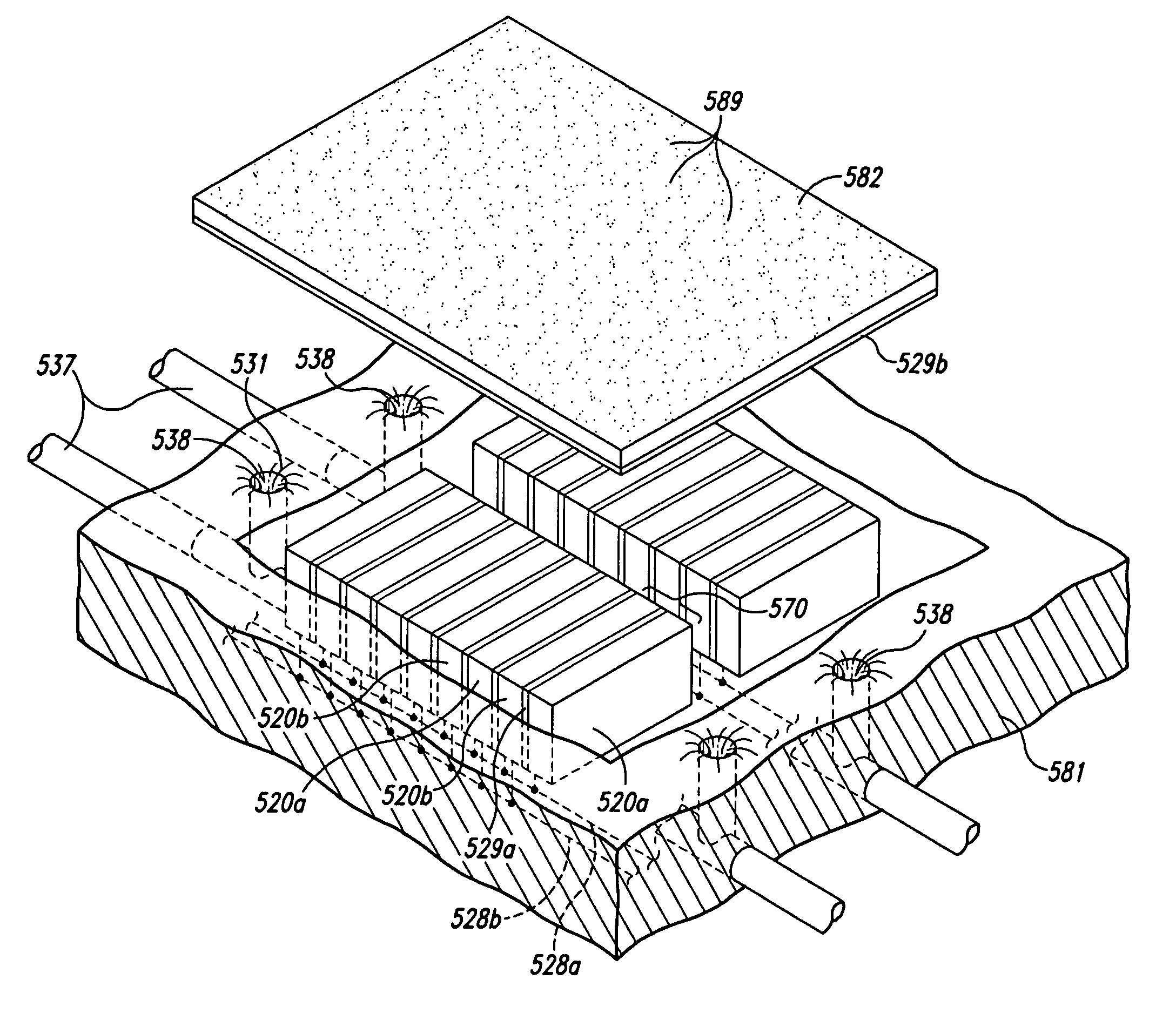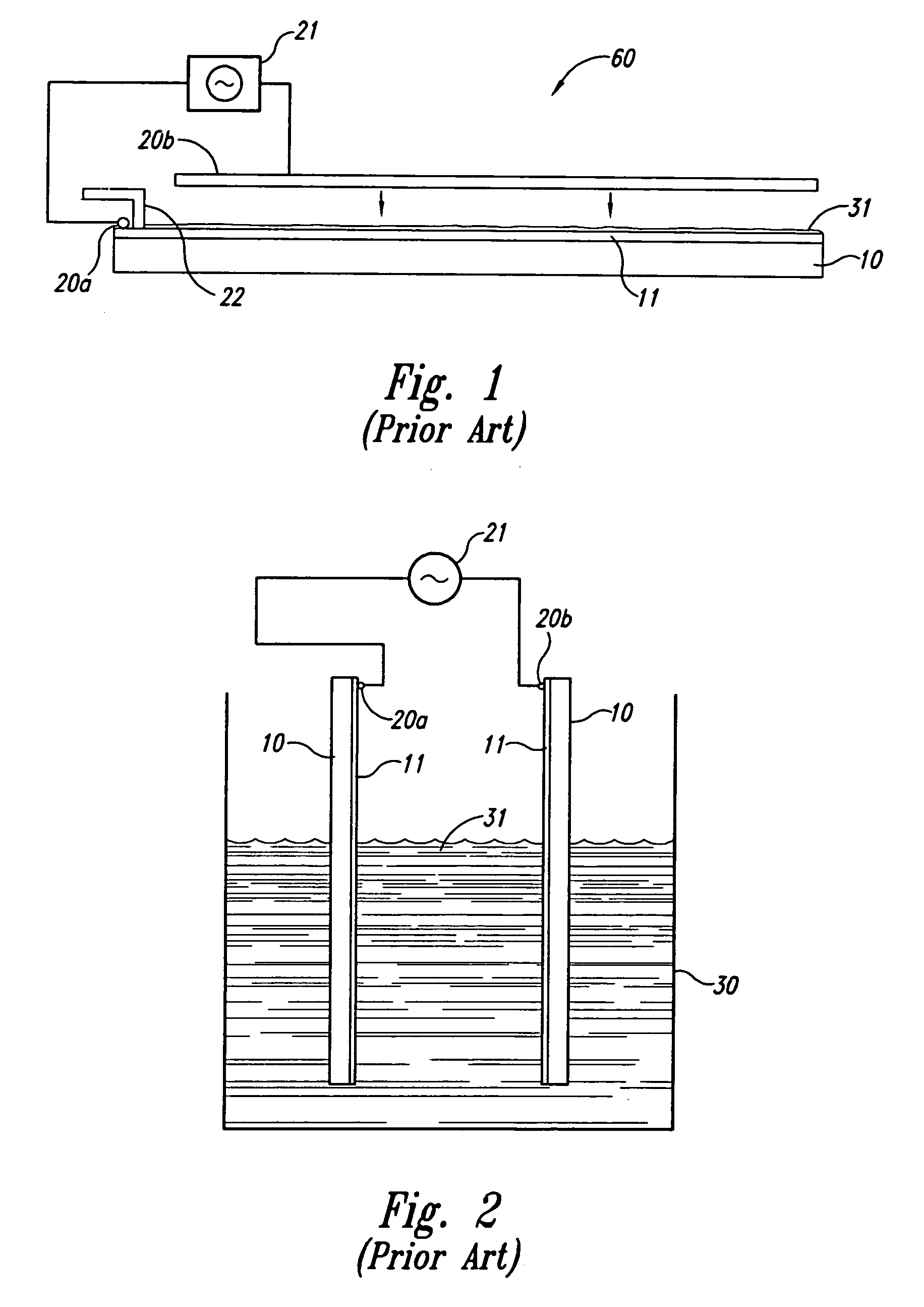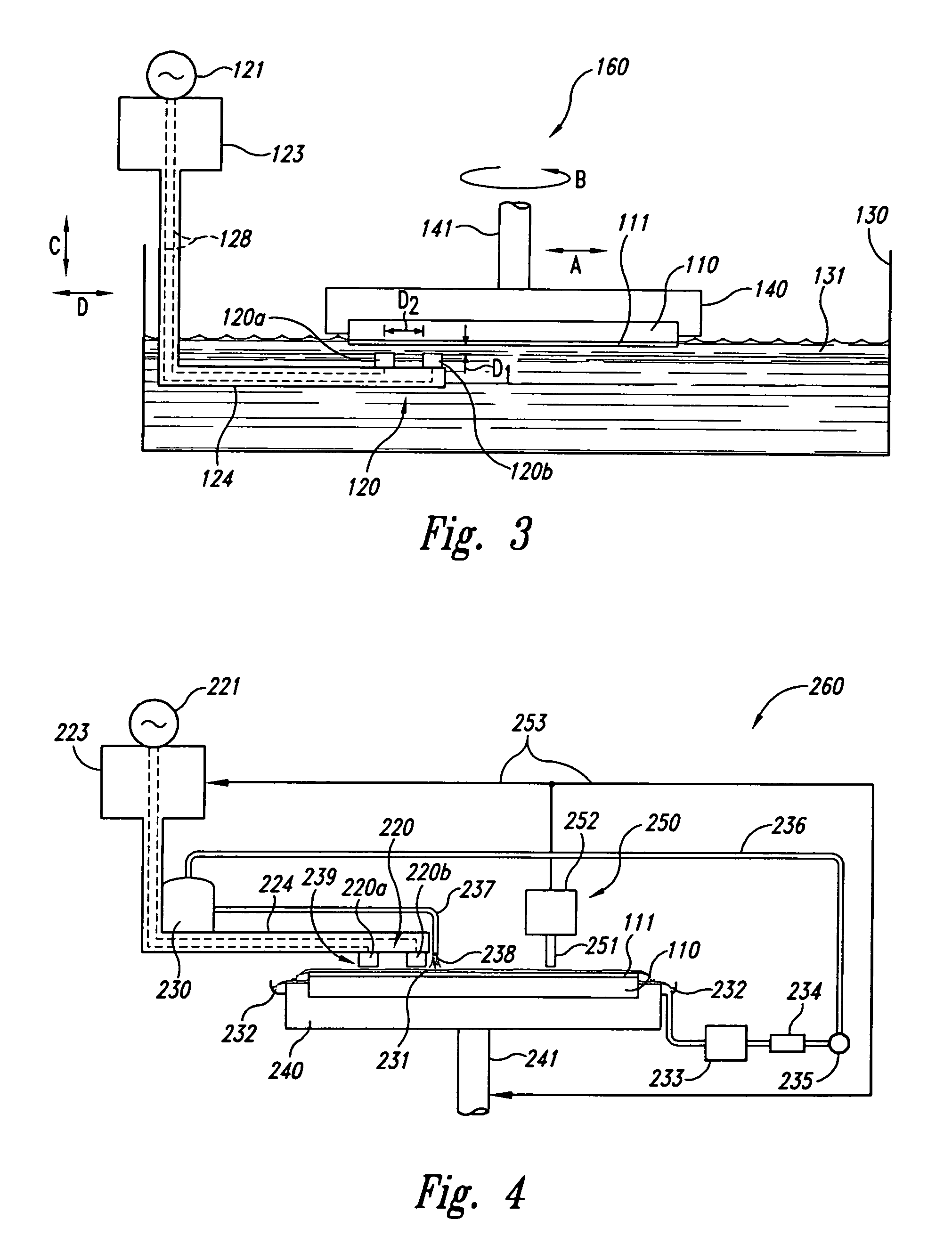Methods and apparatus for removing conductive material from a microelectronic substrate
a microelectronic substrate and conductive material technology, applied in grinding/polishing apparatus, grinding machines, manufacturing tools, etc., can solve the problems of residual conductive material affecting the formation and/or operation of conductive lines, material cannot be removed from the conductive layer, and electrolytic process may not uniformly remove material from the substra
- Summary
- Abstract
- Description
- Claims
- Application Information
AI Technical Summary
Benefits of technology
Problems solved by technology
Method used
Image
Examples
Embodiment Construction
[0024]The present disclosure describes methods and apparatuses for removing conductive materials from a microelectronic substrate and / or substrate assembly used in the fabrication of microelectronic devices. Many specific details of certain embodiments of the invention are set forth in the following description and in FIGS. 3–12B to provide a thorough understanding of these embodiments. One skilled in the art, however, will understand that the present invention may have additional embodiments, or that the invention may be practiced without several of the details described below.
[0025]FIG. 3 is a partially schematic, side elevational view of an apparatus 160 for removing conductive material from a microelectronic substrate or substrate assembly 110 in accordance with an embodiment of the invention. In one aspect of this embodiment, the apparatus 160 includes a vessel 130 containing an electrolyte 131, which can be in a liquid or a gel state. A support member 140 supports the microele...
PUM
| Property | Measurement | Unit |
|---|---|---|
| Electrical conductivity | aaaaa | aaaaa |
| Flow rate | aaaaa | aaaaa |
| Current | aaaaa | aaaaa |
Abstract
Description
Claims
Application Information
 Login to View More
Login to View More - Generate Ideas
- Intellectual Property
- Life Sciences
- Materials
- Tech Scout
- Unparalleled Data Quality
- Higher Quality Content
- 60% Fewer Hallucinations
Browse by: Latest US Patents, China's latest patents, Technical Efficacy Thesaurus, Application Domain, Technology Topic, Popular Technical Reports.
© 2025 PatSnap. All rights reserved.Legal|Privacy policy|Modern Slavery Act Transparency Statement|Sitemap|About US| Contact US: help@patsnap.com



